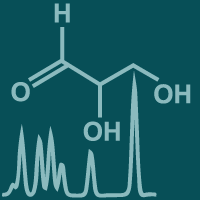Topic Menu
► Topic MenuTopic Editors

2. School of Human Sciences, The University of Western Australia, Nedlands, Perth, WA 6009, Australia

Cancer Cell Metabolism (2nd Edition)
Topic Information
Dear Colleagues,
In recent years, we have seen an enormous increase in studies associated with cancer metabolism. Cancer metabolism can refer to all types of alterations in the metabolic pathways that are evident in cancer cells compared with non-malignant cells of the same tissue. Metabolic alterations in cancer cells are numerous and include aerobic glycolysis, reduced oxidative phosphorylation, and the increased generation of biosynthetic intermediates needed for cell proliferation and survival. Furthermore, metabolic rewiring can support common cancer features such as migration, invasion, and metastasis. With the many discoveries made in the past decade, we now realize that cancer metabolism is a key component of cellular transformation. However, emerging evidence also indicates that cancer metabolism is complex, and further studies are needed to apply our knowledge to therapeutic settings. For this Special Issue, we invite authors to submit contributions that provide novel findings in the field of cancer metabolism. We welcome results from basic research, preclinical, or clinical research and reviews that highlight new findings in the field of cancer metabolism.
Prof. Dr. Arun Dharmarajan
Prof. Dr. Paula Guedes De Pinho
Topic Editors
Keywords
- glycolysis
- glutamine metabolism
- mitochondria metabolism
- lipid metabolism
- nutrient scavenging
Participating Journals
| Journal Name | Impact Factor | CiteScore | Launched Year | First Decision (median) | APC | |
|---|---|---|---|---|---|---|

Cancers
|
4.5 | 8.0 | 2009 | 16.3 Days | CHF 2900 | Submit |

Cells
|
5.1 | 9.9 | 2012 | 17.5 Days | CHF 2700 | Submit |

Endocrines
|
- | - | 2020 | 38.7 Days | CHF 1000 | Submit |

International Journal of Molecular Sciences
|
4.9 | 8.1 | 2000 | 18.1 Days | CHF 2900 | Submit |

Metabolites
|
3.4 | 5.7 | 2011 | 13.9 Days | CHF 2700 | Submit |

MDPI Topics is cooperating with Preprints.org and has built a direct connection between MDPI journals and Preprints.org. Authors are encouraged to enjoy the benefits by posting a preprint at Preprints.org prior to publication:
- Immediately share your ideas ahead of publication and establish your research priority;
- Protect your idea from being stolen with this time-stamped preprint article;
- Enhance the exposure and impact of your research;
- Receive feedback from your peers in advance;
- Have it indexed in Web of Science (Preprint Citation Index), Google Scholar, Crossref, SHARE, PrePubMed, Scilit and Europe PMC.

